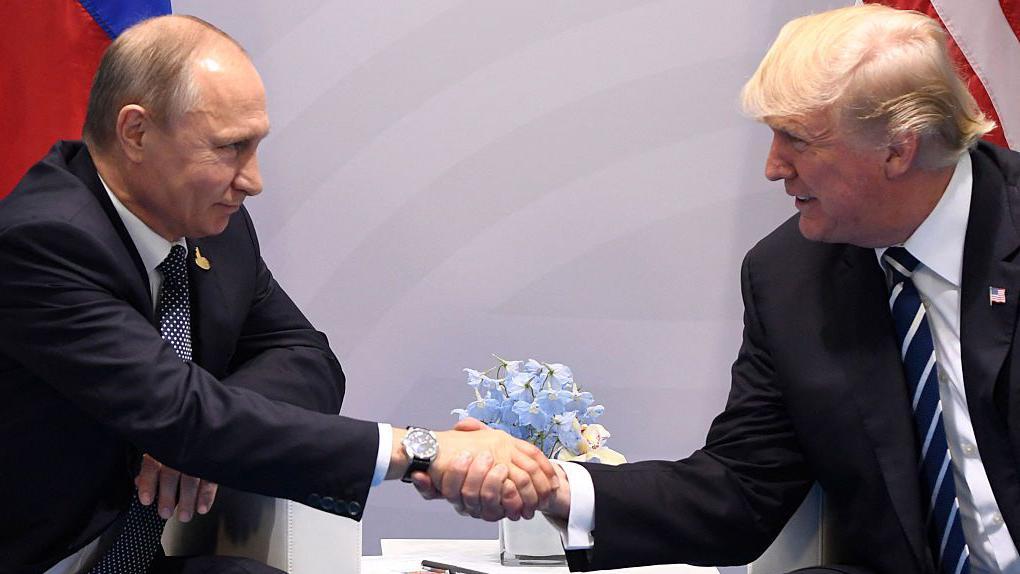Contrasting Priorities and Strategic Goals of Trump and Putin
US President Donald Trump and Russian President Vladimir Putin are set to meet in Alaska for a high-profile summit, bringing together two leaders with vastly different objectives. While both men aim to address the ongoing conflict in Ukraine, their priorities and strategies reflect deep-seated differences that could shape the outcome of their discussions.
Putin’s Ambitions: Recognition and Territorial Gains
For Vladimir Putin, the summit represents an opportunity to reclaim international standing. The meeting itself is a clear signal that Russia’s efforts to isolate the Kremlin have not succeeded. By hosting the event in Alaska, a location with historical ties to Russian influence, Putin aims to underscore his nation’s global relevance. The choice of venue also offers strategic advantages, including proximity to Russia and a distance from European and Ukrainian leaders, allowing Moscow to focus directly on its dialogue with Washington.
Beyond recognition, Putin seeks to solidify Russia’s territorial gains in four key regions of Ukraine: Donetsk, Luhansk, Zaporizhzhia, and Kherson. He insists that these areas remain under Russian control, while Ukraine refuses to accept such terms. If Trump supports Russia’s position, it could shift the balance of power, potentially leading to reduced U.S. support for Kyiv and increased economic cooperation between the two nations.
However, economic pressures on Russia may complicate this scenario. Rising budget deficits and declining oil and gas revenues could push Putin toward a compromise. Despite these challenges, Russian officials continue to emphasize their military dominance, suggesting that the war may not be ending anytime soon.
Trump’s Goals: A Peacemaker Legacy
Donald Trump, on the other hand, has long positioned himself as a potential peacemaker. During his 2024 campaign, he promised to resolve the Ukraine conflict quickly, a pledge that has shaped his approach since returning to the White House. His interactions with Ukrainian President Volodymyr Zelensky have been marked by frustration, with Trump at times suspending military aid and intelligence sharing.
Recent months have seen Trump become more critical of Putin, setting deadlines for sanctions against countries that do business with Russia. However, these deadlines have often been withdrawn, highlighting the unpredictability of his stance. This inconsistency makes it difficult to determine exactly what Trump hopes to achieve during the summit.
To manage expectations, Trump has described the meeting as a “feel-out” session, suggesting that any breakthrough may come quickly or not at all. White House officials have reinforced this message, calling the summit a “listening session.” Yet, Trump’s desire to be seen as a peacebuilder remains a driving force, with many believing he would seize any opportunity to claim progress in ending the war.
The Complex Dynamics of the Summit
The summit’s success will depend heavily on how both leaders navigate their differing agendas. Putin, a seasoned negotiator, may seek to allow Trump to take credit for peace on Russia’s terms. Meanwhile, Trump’s unpredictable nature means that outcomes could be difficult to predict.
European leaders and Zelensky have expressed concerns about the potential for a deal that Ukraine cannot or will not accept. Their recent communications with Trump aim to ensure that any agreement aligns with Ukraine’s interests.
Broader Implications of the Meeting
The summit also carries symbolic weight. Alaska’s history as a former Russian territory adds a layer of historical significance to the event, which Moscow is keen to highlight. This narrative reinforces Russia’s argument that borders can change, justifying its actions in Ukraine.
At the same time, the meeting underscores the complex relationship between the United States and Russia. While tensions remain high, the summit represents an attempt to find common ground, even if only temporarily.
As the world watches, the outcome of the talks will have far-reaching consequences for the future of the Ukraine conflict and the broader geopolitical landscape. Whether the summit leads to meaningful progress or further division remains to be seen.



